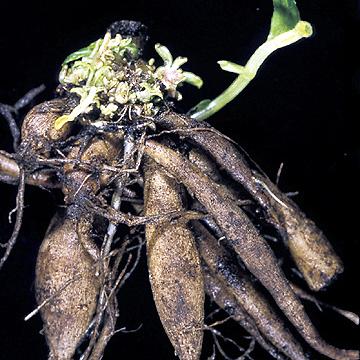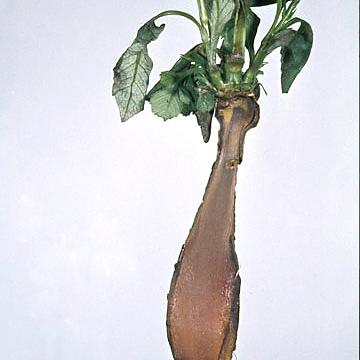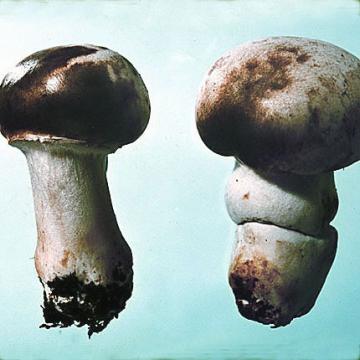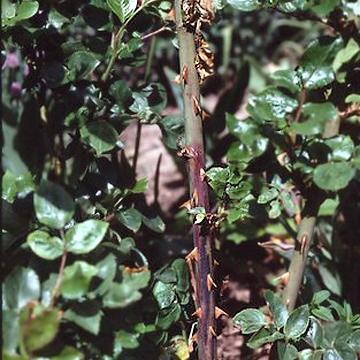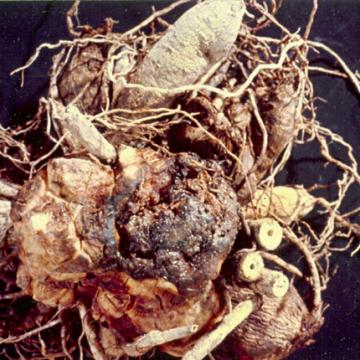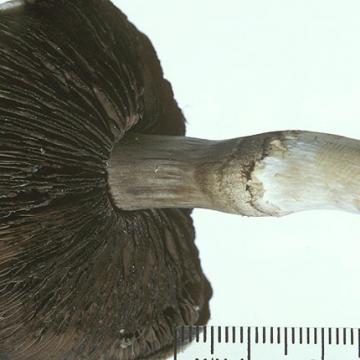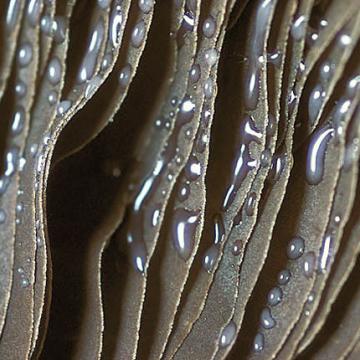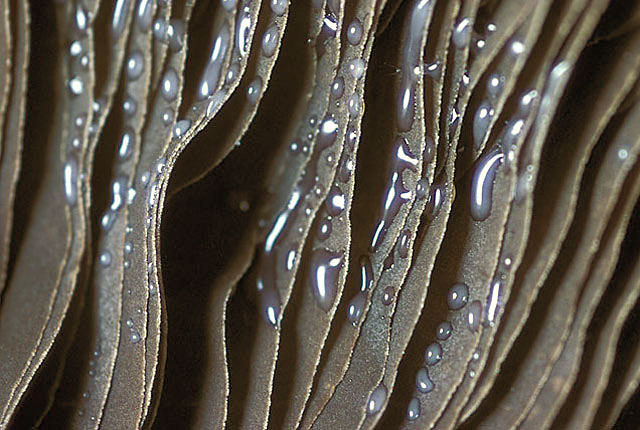DISEASE: Bacterial fasciation (Leafy gall)
HOST: Dahlia
Dalhlia tubers with proliferation and leaf development.
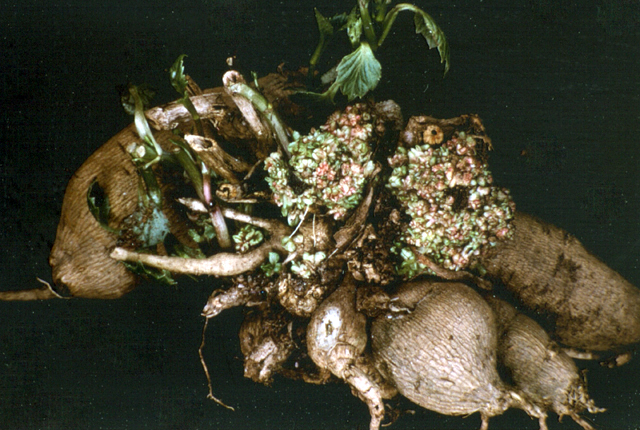
Bacterial fasciation (Leafy gall) | Dahlia
DISEASE: Bacterial fasciation (Leafy gall)
HOST: Dahlia (Dahlia sp.)
PATHOGEN: Rhodococcus fascians
SOURCE: M. Shurtleff
DISEASE: Bacterial fasciation (Leafy gall)
HOST: Dahlia
Bacterial fasciation of dahlia tubers.
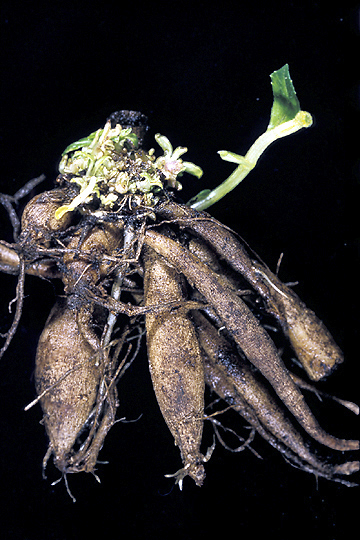
Bacterial fasciation (Leafy gall) | Dahlia
DISEASE: Bacterial fasciation (Leafy gall)
HOST: Dahlia (Dahlia sp.)
PATHOGEN: Rhodococcus fascians
SOURCE: H. van Hoof, M. Geesteranus
DISEASE: Bacterial rot
HOST: Dahlia
Longitudinal section of dahlia with discolored, rotted tissues.

Bacterial rot | Dahlia
DISEASE: Bacterial rot
HOST: Dahlia (Dahlia sp.)
PATHOGEN: Dickeya sp.
PATHOGEN SYNONYM: Erwinia chrysanthemi
SOURCE: J. Young
DISEASE: Brown blotch
HOST: Mushroom
Mushrooms with rotted, brownish discoloration of infected areas.
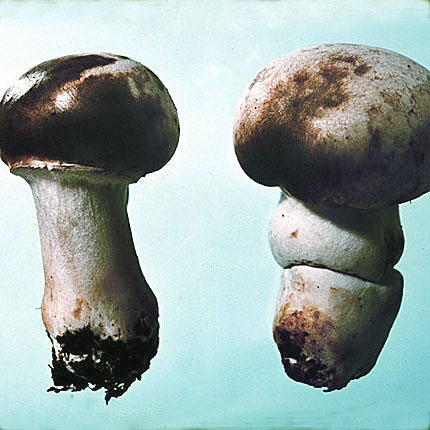
Brown blotch | Mushroom
DISEASE: Brown blotch
HOST: Mushroom (Agaricus campestris)
PATHOGEN: Pseudomonas tolaasii
SOURCE: J. Young
DISEASE: Cane blight
HOST: Rose
Rose with blighted necrotic cane.
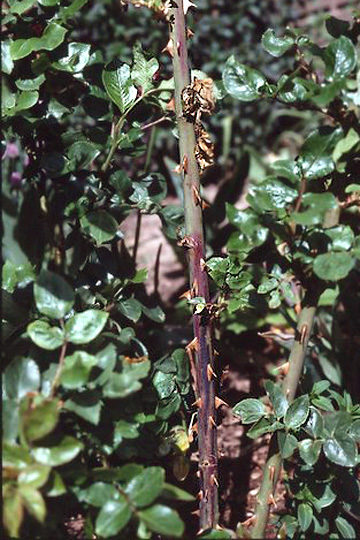
Cane blight | Rose
DISEASE: Cane blight
HOST: Rose (Rosa sp.)
PATHOGEN: Pseudomonas syringae
SOURCE: S. Mohan
DISEASE: Crown gall
HOST: Dahlia
Crown gall of dahlia tubers. Note brownish, rough-surfaced galls, one of which shows rot. Galls often are infected by microorganisms that cause rot.
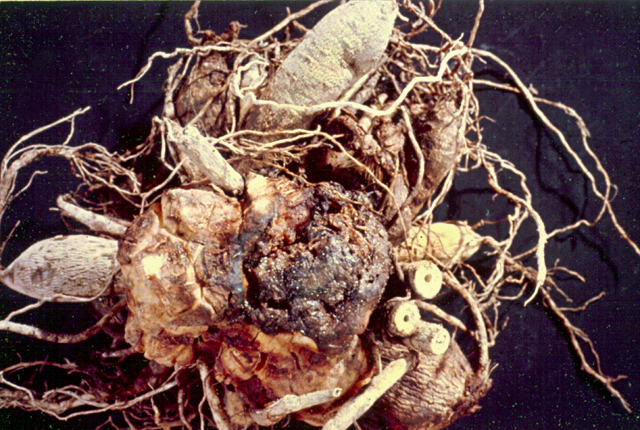
Crown gall | Dahlia
DISEASE: Crown gall
HOST: Dahlia (Dahlia sp.)
PATHOGEN: Agrobacterium tumefaciens
PATHOGEN SYNONYM: Rhizobium sp.
SOURCE: M. Shurtleff
DISEASE: Crown gall
HOST: Rose
Rose with galls near soil line.
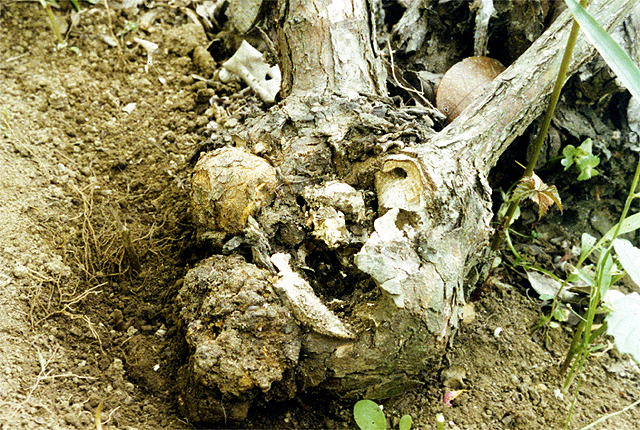
Crown gall | Rose
DISEASE: Crown gall
HOST: Rose (Rosa sp.)
PATHOGEN: Agrobacterium tumefaciens
PATHOGEN SYNONYM: Rhizobium sp.
SOURCE: M. Goto
DISEASE: Drippy gill
HOST: Mushroom
Drippy gill is characterized by small dark spots on gills with drops of bacterial ooze at the centers. Severe infection results in slimy areas and collapse of gills.
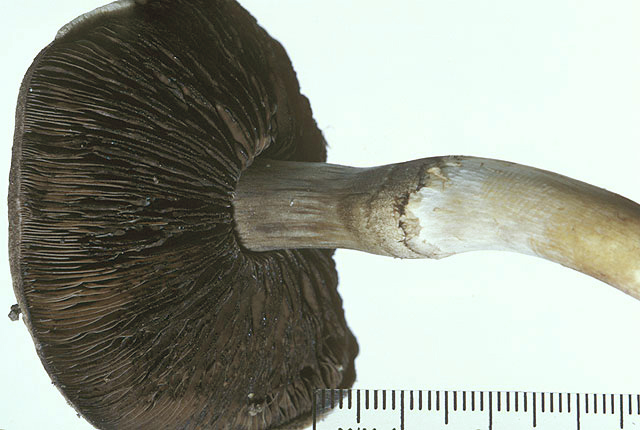
Drippy gill | Mushroom
DISEASE: Drippy gill
HOST: Mushroom (Agaricus campestris)
PATHOGEN: Pseudomonas agarici
SOURCE: J. Young



